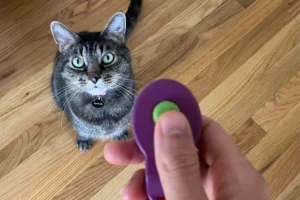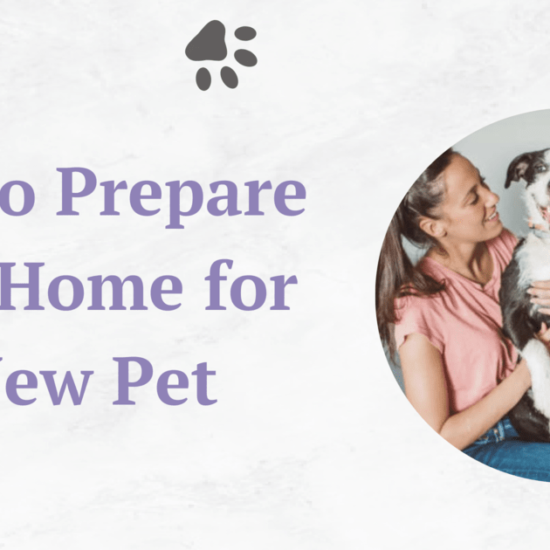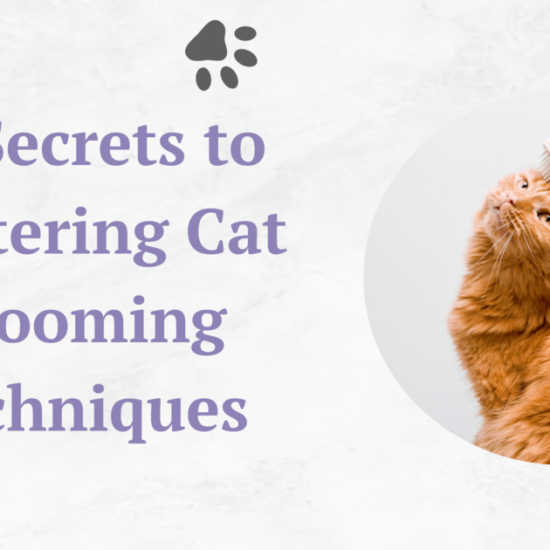Imagine the world through the eyes of an indoor cat. Their day begins in a cozy, sunlit corner of a quiet room. Unlike their wild ancestors, who roamed vast terrains, these feline companions navigate a different kind of jungle: the indoor realm. Here, the rustle of a leaf is replaced by the hum of a refrigerator, and the thrill of the hunt takes the form of a laser pointer’s elusive red dot.
Table of Contents
Introduction
Indoor cats live in a world where their basic needs are readily met. Food bowls replace hunting grounds, and soft beds stand in for safe havens in the wild. Yet, beneath their calm exterior, there lies a spirit still tethered to their wild roots. Their instinctual needs for exploration, hunting, and play are as alive as those of their ancestors stalking through the forests and fields.
Understanding the Feline Mind

Cats are thinkers. Their brains, while small compared to ours, are incredibly sophisticated. They are capable of problem-solving, learning through observation, and adapting to new environments. This cognitive agility is a remnant of their wild ancestry, where quick thinking and adaptability were key to survival.
Their behaviour is often a blend of instinct and intelligence. Take, for instance, their hunting behaviour. A cat stalking a toy is not just playing; it’s rehearsing the intricate ballet of hunt and capture. This instinctual behaviour is deeply ingrained, a trait passed down from their wild ancestors.
The Necessity of Mental Stimulation
Unlike their wild ancestors, indoor cats have limited opportunities for hunting and exploring, which can lead to boredom and a sedentary lifestyle.
Boredom in cats can manifest as destructive behavior, aggression, or excessive vocalization, highlighting the need for mental enrichment.
Cognitive and Physical Health Benefits

- Mental stimulation exercises a cat’s cognitive functions, such as problem-solving and memory retention, keeping their minds sharp and engaged.
- Engaging play activities also encourage physical movement, which is crucial for maintaining a healthy weight and preventing obesity in cats.
Reducing Stress and Anxiety

- Cats, like humans, can experience stress and anxiety. Mental stimulation provides a constructive outlet for these feelings, reducing stress-related behaviors like excessive grooming or hiding.
Interactive Play and its Importance
- Interactive toys such as feather wands, laser pointers, and puzzle toys are excellent for simulating a cat’s natural hunting behavior, providing both mental and physical exercise.
- Regular play sessions, even as short as five minutes, have been linked to reduced behavior problems in cats, underscoring the importance of consistent engagement.
Types of Mental Stimulation
Puzzle Feeders

- Puzzle feeders require cats to solve a problem to access their food, mimicking the challenge of hunting in the wild. This type of feeder encourages mental engagement and physical activity.
- Homemade puzzle feeders, such as an egg carton with food inside, can be a cost-effective and creative way to stimulate your cat’s mind.
Environmental Enrichment

- Creating an enriching environment with climbing trees, scratching posts, and window perches allows cats to explore and satisfy their curiosity.
- Boxes, whether real or imaginary outlines on the floor, provide cats with a sense of security and reduce stress.
Training and New Skills

- Clicker training and “Do as I do” training styles are not just for dogs; they can be adapted for cats to encourage learning and behavioral development.
- Training sessions offer mental challenges and can strengthen the bond between cats and their owners.
Introducing Novelty

- Regularly introducing new objects or scents, such as catnip, can keep the indoor environment stimulating for cats.
- Novel experiences should be balanced with predictability to avoid overstimulation.
Note: There might be affiliate links mentioned here. We may receive a commission if you purchase a product through an affiliate link. There is no additional charge for you. Please do your own research before making any online purchases.
Engaging All Five Senses
Enhancing the sensory environment of indoor cats is essential for their well-being. Here’s how you can engage each of their five senses:
Sight

- Cats see best in blue, yellow, and green. Introducing these colors into their environment can have a calming effect.
- Provide visual stimulation through toys that mimic prey movement, such as wand toys.
- Window perches offer a view of the outside world, and items like mirror tiles or mobiles can create interesting reflections and movements.
Sound

- Cats prefer calm, soothing sounds. Avoid loud noises and consider playing classical music or cat-specific music.
- Nature sounds and the trickling sound of water fountains can also be soothing and interesting for cats.
Smell

- Cats have a highly developed sense of smell. Use scent-based products like Feliway to create a calming environment.
- Introduce new scents through safe herbs like catnip, or by offering different smelling toys.
- Avoid artificial scents and strong essential oils, which can be overwhelming or harmful to cats.
Taste

- Stimulate their sense of taste by varying their diet with different flavors and textures.
- Use food puzzles or hide treats around the house to create a fun hunting game for them.
- This not only satisfies their taste but also engages their natural hunting instincts.
Touch

- Cats love physical contact if they are comfortable with it. Regular petting and grooming can be calming.
- Provide a variety of textures for them to explore, like different types of scratching posts and bedding.
- Toys of varying textures and self-grooming tools can also stimulate their sense of touch.
Remember, every cat is unique, and it’s important to observe their reactions and preferences to different stimuli. By understanding and catering to their sensory needs, you can create a more enriching and comfortable environment for your feline friend.
Understanding and Adapting to Your Cat’s Preferences

Understanding an individual cat’s preferences and adapting strategies accordingly is crucial for their well-being and happiness. Each cat has its unique personality, likes, and dislikes, which can significantly influence their behavior and overall health. By recognizing and catering to these preferences, cat owners can ensure a more harmonious and satisfying relationship with their feline companions.
Here’s a simple quiz/checklist to help identify your cat’s likes and dislikes:
Quiz: Identifying Your Cat’s Preferences
Favorite Toys

- Does your cat prefer interactive toys like feather wands (Yes/No)?
- Does it enjoy chasing laser pointers or light (Yes/No)?
- Does it show interest in catnip toys or puzzles (Yes/No)?
Play Style

- Does your cat like active play, such as running and jumping (Yes/No)?
- Does it prefer more sedate activities, like watching birds from a window (Yes/No)?
- Does your cat enjoy climbing on furniture or cat trees (Yes/No)?
Social Interactions

- Does your cat seek out human company and enjoy being petted (Yes/No)?
- Does it prefer solitary time, avoiding much interaction (Yes/No)?
- How does your cat react to strangers or new animals in the house (Positive/Negative/Neutral)?
Food Preferences

- Does your cat have a preference for wet food over dry food, or vice versa (Wet/Dry/Both)?
- Does it show interest in treats or specific flavors (Yes/No)?
- Have you noticed any specific dislikes in terms of food textures or flavors (Yes/No)?
Environmental Preferences

- Does your cat have favorite spots in the house (Yes/No)?
- Does it prefer high perches or hidden, cozy places (High/Hidden/Both)?
- How does your cat react to changes in its environment (Positive/Negative/Neutral)?
Sensory Preferences

- Is your cat sensitive to loud noises or busy environments (Yes/No)?
- Does it respond well to music or calming sounds (Yes/No)?
- How does your cat react to different textures (likes/dislikes specific textures)?
Analyzing the Results

- High Yes in Active Play and Toys: Your cat enjoys physical activity and would benefit from interactive toys and play sessions.
- Preference for Solitude: Provide a safe, quiet space where your cat can retreat and relax.
- Food Specifics: Catering to your cat’s dietary preferences can improve their eating habits and overall health.
- Loves High Perches: Ensure that your home has safe and accessible high spots for your cat to enjoy.
- Sensitive to Noise: Creating a calm environment, potentially with soft music, can help soothe a sensitive cat.
By understanding these preferences, you can tailor your care and interaction to better suit your cat’s individual needs. Remember, what works for one cat may not work for another, and preferences can change over time, so it’s important to remain observant and flexible in your approach.












